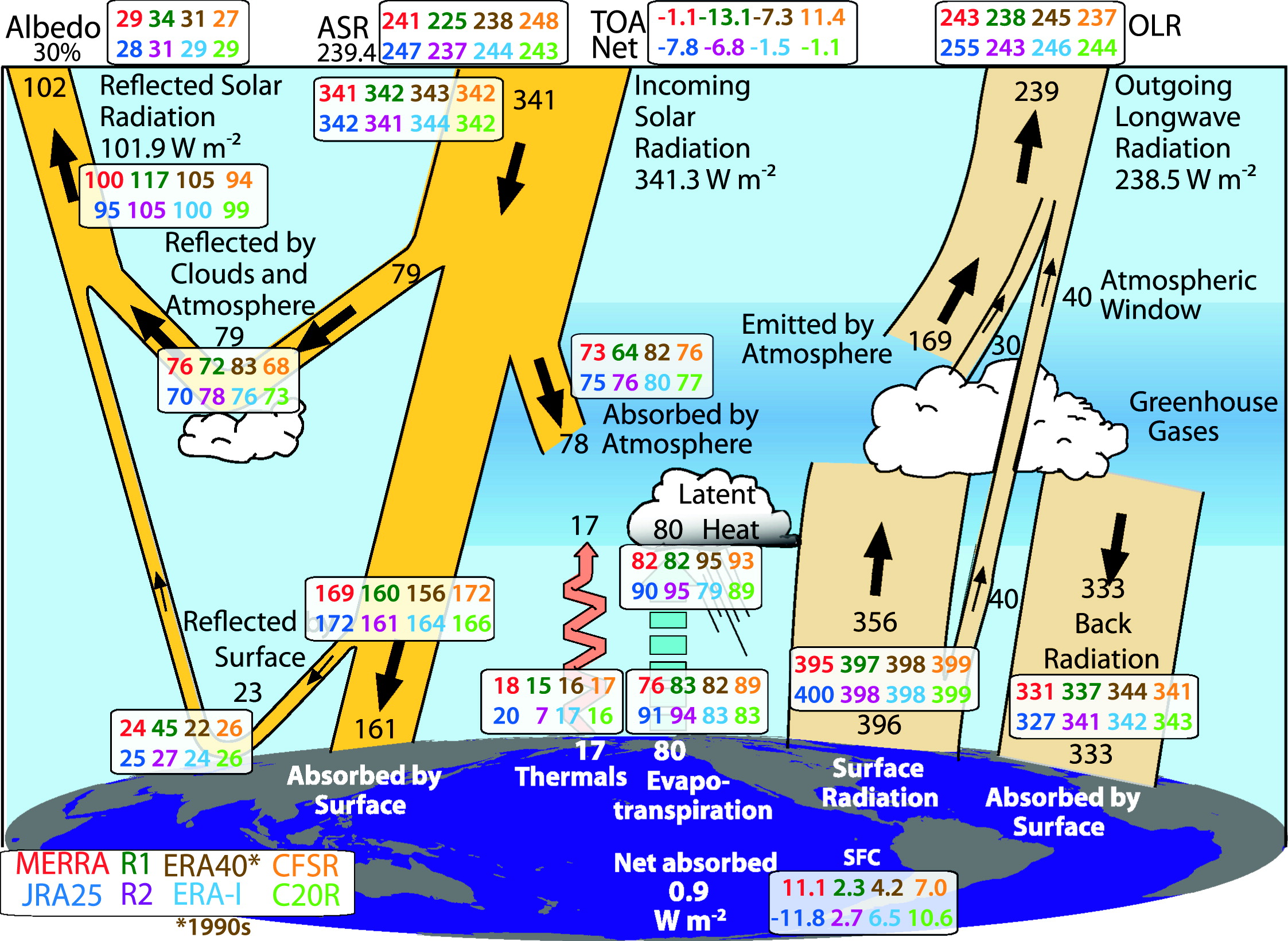Introduction and Content
The course consists of the three parts.
1.Cloud microphysics, rain and ice formation in clouds.Physical and chemical processes of aerosol particles, natural and anthropogenic sources, atmospheric lifetime of aerosol and connection with the hydrological cycle. Interactions of aerosol with atmospheric radiative transfer (scattering, absorption) and their influence on cloud properties. Radiative forcing by aerosol and climate impacts.
2.Role of water cycle in the energy budget of the climate
system. Influence of water cycle on climate sensitivity. General circulation
of the atmosphere: jets, tropical Hadley circulation, mid-latitude Ferrel
circulation, stratospheric Brewer Dobson circulation. Role of the water
cycle, radiation and waves and vortices in forcing these zonal mean circulations.
Transport of momentum, heat and mass by these circulations and by eddies.
Interaction between adiabatic dynamics and diabatic processes (radiation
and heat sources and sinks due to phase changes of water). Dynamics of
the tropopause.
The background values (shown in black) of the energy fluxes are based on observations for 2000–05 (Trenberth et al. 2009). Superposed, with the key in lower left corner), are values from the various reanalyses for the 2002–08 period except for ERA-40, which is for the 1990's (color coded; W m−2). Above the graphic, values are given for albedo (%), Absorbed Solar Radiation (ASR), net Top of the Atmosphere (TOA) radiation, and Outgoing Long-wave Radiation (OLR); the box labeled SFC near the bottom gives the net flux absorbed at the surface. For the 1990's the latter value is 0.6 W m−2. Note the important role of water in the energy balance (Figure due to Trenberth et al., 2011).
Goal of the Course
1. ability to describe and basically understand the seasonal
and interannual variability of the large scale circulation of the atmosphere
and the associated transport of water vapour.
2. ability to describe and basically understand on how atmospheric radiative
processes, the energetics of the water cycle and large scale planetary
waves determine the seasonal cycle of temperature and wind-jets.
3. understand the physical (radiative and thermodynamic) aspects of aerosol,
clouds and land surface processes
4. acquire knowledge on microphysical and chemical properties of aerosol
and clouds, and understand their role in aerosol direct and indirect climate
effects
5. demonstrate a broad insight in how the different aspects of the hydrological
cycle are related and interact with other diabatic and adiabatic processes
6. understand how the hydrological cycle affects and is affected by climate
(change)
7. explore and understand scientific literature on a subject associated
with aerosol, clouds, water cycle, radiation and atmospheric circulation
and climate
8. process and analyse records of observations and model output
Lecture Notes
The first part of the course focusses on aerosols, clouds and climate
The second part of the course focusses on the role of water in the general circulation of the atmosphere
Lecture notes for the second part of the course are boxes 2.1-2.4 in chapter 2 and chapters 10, 11 and 12 of the lecture notes on "Atmospheric Dynamics": see AtmosphericDynamics.htm
Books
.
Schedule
Schedule of the second part of the course (Spring 2014): ScheduleCandHC2014.pdf
Evaluation/assessment
1 exam (April)
Several exercises using reanalysis data
1 essay and 1 oral presentation
Grade
.
Essays
.
Exam
1 exam in April (week 16)
Internetsites on Climate
http://forecast.uchicago.edu/lectures.html.
http://www.aip.org/history/climate/.
http://www.gfdl.noaa.gov/blog/isaac-held/.
Lectures
Lecture 1 (23042014): WaterCycle_Dynamics1.pdf
Lecture 2 (30042014): WaterCycle_Dynamics2.pdf
Lecture 3 (07052014): WaterCycle_Dynamics3.pdf
Lecture 4 (14052014): WaterCycle_Dynamics4.pdf
Lecture 5 (21052014): WaterCycle_Dynamics5.pdf
Lecture 6 (04062014): WaterCycle_Dynamics6.pdf
Lecture 7 (11062014): WaterCycle_Dynamics7.pdf
Lecture 8 (25062014): WaterCycle_Dynamics8.pdf
Problems
Assignment 1 (23042014): Assignment_1.pdf
Assignment 2 (30042014): Assignment_2.pdf
Assignments 3 (07052014): Assignment_3.pdf
Assignment 4 (14052014): Assignment_4.pdf
Assignment 5 (21052014): Assignment_5.pdf
Assignment 6 (11062014): Assignment_6.pdf
